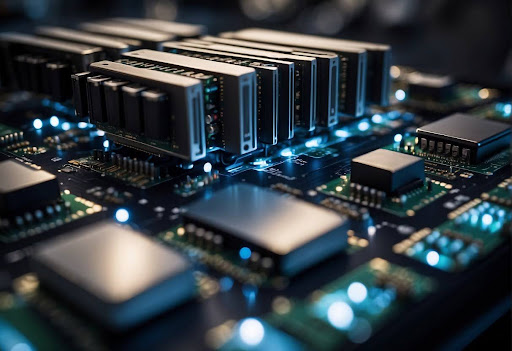What is a Subprocessor: Understanding Your Data Processing Chain
By Emily Fenton
Updated February 6, 2024

A subprocessor is an entity that is engaged by a primary data processor to handle personal data on behalf of a data controller. This arrangement is commonly found within organizations that need to outsource certain data processing activities, but it comes with a set of strict regulatory requirements to ensure data protection and compliance with relevant laws such as the General Data Protection Regulation (GDPR).
It’s vital for a subprocessor to abide by the instructions provided by the data processor and to implement security measures to safeguard the personal data being handled.
The selection of a subprocessor requires careful consideration by the primary data processor, as the responsibility for any data breaches or non-compliance issues can trace back to both the processor and the controller. Moreover, it is standard for processors to obtain explicit written permission from the controller before engaging a subprocessor. The controller holds the right to veto a subprocessor if they deem it unsuitable, thereby maintaining control over who has access to the personal data under their jurisdiction.
The role of subprocessors has grown in importance with the increased use of cloud-based services and complex supply chains in data processing. These third-party entities must not only follow the established protocols of data processing as set forth by the processor but also contribute to compliance duties, including assisting data controllers in fulfilling their obligations under GDPR. This ensures a framework where all parties involved are working cohesively to maintain data integrity and confidentiality.
Understanding Subprocessors
In managing personal data, the roles and responsibilities of entities involved are clearly defined by regulations. Subprocessors, processors, and controllers form a critical framework in this ecosystem.
Definition and Role of a Subprocessor
A subprocessor is an entity engaged by a data processor to assist in fulfilling the processing of personal data. Contrary to a processor, which is directly involved in the processing for the controller, a subprocessor works under the instruction of the processor, carrying out specific tasks that involve personal data. For instance, if a company uses cloud services to handle customer data, the cloud provider may be a subprocessor if it processes any data on behalf of the company.
Subprocessor vs. Processor
The main distinction between a subprocessor and a processor lies in their relational hierarchy and scope of authority. The processor is an independent entity that determines how to process personal data on behalf of the controller. A subprocessor does not have this level of autonomy and operates under the processor's directives. Responsibilities of a subprocessor include storage, analysis, or other data handling tasks as assigned by the processor.
Subprocessor vs. Controller
While a subprocessor and a processor perform similar functions in terms of data handling, their relationship with the controller differs significantly. The controller determines the "what" and "why" behind personal data processing and is ultimately responsible for its protection and compliance with data protection laws. The subprocessor acts on behalf of the processor and does not have direct control over the processing purposes or means, positioning them further down the operational hierarchy.
Entities within the data processing hierarchy must uphold data protection and privacy standards. Understanding each role is crucial for compliance and effective data management.
Legal Framework and Compliance
The compliance landscape for subprocessors hinges on stringent legal requirements, particularly within the European Union. These entities must adhere to a clear legal framework, which includes obligations under the General Data Protection Regulation (GDPR) and the necessity to establish a data processing agreement (DPA).
GDPR and Subprocessors
Under the GDPR, subprocessors have defined responsibilities for handling personal data. They must comply with the same data protection measures as main processors. The EU's legal framework is explicit in that subprocessors must ensure the security and confidentiality of personal data they handle, and they must act only on documented instructions from the data controller.
Data protection obligations include:
- Ensuring data confidentiality and integrity
- Implementing appropriate technical and organizational measures
- Reporting data breaches to the data processor without undue delay
Contractual Requirements
The law stipulates that a legal binding agreement must be in place between the data processor and a subprocessor. This contractual linkage ensures a chain of accountability in the protection of personal data.
Key elements of these contracts often encompass:
- Scope, nature, and purpose of the processing
- Duration of processing
- Types of personal data and categories of data subjects involved
- Obligations and rights of the data controller
Data Processing Agreement
A Data Processing Agreement (DPA) is a crucial document that outlines the subprocessor's data privacy compliance. It formalizes the relationship between processors and subprocessors and acts as a guarantee for compliance with GDPR obligations.
Critical aspects of a DPA include:
- Processed data's subject matter and duration
- Nature and purpose of processing
- The rights and obligations of both parties
- Subprocessors' assistance to processors in ensuring GDPR compliance, including with regard to data subject rights and audit procedures.
Subprocessor Selection and Responsibilities

When engaging a subprocessor, it is essential to ensure they can uphold the necessary standards of data protection and follow prescribed instructions precisely. Due diligence in selection and clarity in defining responsibilities is critical to maintaining compliance with data protection laws.
Criteria for Selection
The selection of a data subprocessor requires a rigorous assessment of their capabilities to handle data securely and fulfill the obligations set by the data processor and controller. Criteria for selection include:
- Compliance: The subprocessor must demonstrate compliance with relevant data protection legislation, such as the GDPR.
- Security Measures: They must have robust security measures in place to safeguard personal data from unauthorized access, disclosure, or alteration.
- Experience and Reliability: Their track record in managing sensitive data should be scrutinized to ensure reliability.
Security and Confidentiality Obligations
A data subprocessor is bound by stringent security and confidentiality obligations to protect the integrity of the data. They must:
- Maintain an adequate level of protection that aligns with or exceeds the standards of the data processor.
- Implement and regularly review technical and organizational measures to prevent data breaches.
Duties and Responsibilities
The duties and responsibilities of a subprocessor are legally binding and detailed in contractual agreements. Responsibilities include:
- Following Instructions: Subprocessors are obliged to act strictly in accordance with the instructions provided by the data processor.
- Assisting in Compliance: They should facilitate the data controller in fulfilling their GDPR obligations, which includes reporting data breaches and aiding in Data * Protection Impact Assessments (DPIAs).
- Contractual Safeguards: There must be clear contractual safeguards to ensure subprocessors do not process data beyond agreed terms.
International Data Transfers

In the interconnected realm of global commerce, international data transfers are a routine yet critical operation that must align with stringent data protection laws and principles. Specifically, when personal data is transferred across borders, organizations must ensure compliance with different jurisdictions' legal requirements to maintain an adequate level of protection.
Global Data Protection Considerations
When personal data is transferred from one country to another, the transferring entity must consider the data protection regulations of both the exporting and importing jurisdictions. The General Data Protection Regulation (GDPR) has raised the bar for data protection by requiring that personal data transferred out of the EU meet a standard of protection consistent with GDPR. Transferring entities must assess the adequacy of protection in the recipient country, and in many cases, implement safeguards such as Standard Contractual Clauses (SCCs) or Binding Corporate Rules (BCRs) if the level of protection is not inherently adequate.
EU and USA Data Transfer
EU-USA data transfers fall under intense scrutiny since the EU mandates a high standard of data protection. In order to reconcile the EU's stringent data protection standards with the USA's different approach to data privacy, entities often resort to specific transfer mechanisms that provide an adequate level of protection. Consequently, organizations in the USA must adhere to frameworks like the Privacy Shield or, more recently, the updated SCCs to facilitate data transfers in compliance with GDPR. The importance of these mechanisms is further underscored by the evolving jurisprudence and legislative landscape, which organizations must closely monitor to ensure ongoing compliance.
Practical Implications for Stakeholders

In managing personal data, stakeholders need to understand the dynamic between data controllers, data processors, and subprocessors, ensuring by all means that transparency, compliance, and technical support are prioritized for the safety of the data subject's information.
Controllers' Oversight of Subprocessors
Data controllers must rigorously vet and monitor their subprocessors to ensure that they are capable of protecting the data subject's personal details according to the GDPR. This includes establishing clear contracts with detailed data protection obligations and auditing the subprocessor's practices regularly.
Subprocessors' Transparency Towards Customers
Subprocessors are obligated to maintain a high level of transparency with their customers, often data controllers, about how they handle personal data. This includes providing customers with information on data processing activities, security measures in place, and any third parties involved in the processing.
People Also Ask: How Can I Alert Customers When My Subprocessors are Updated?
Support and Technical Assistance
Controllers and processors should have access to timely and efficient support from their subprocessors, ensuring they have the necessary assistance to respond to technical or security issues that may arise. Subprocessors should be prepared to aid controllers in fulfilling their GDPR obligations, such as responding to data subject access requests.
Subprocessors in Cloud Computing

Cloud computing has transformed the way organizations manage and process data. Within this ecosystem, subprocessors play a critical role, particularly in relation to the services provided by Cloud Service Providers (CSPs) and their compliance with regulations like the General Data Protection Regulation (GDPR).
Role of Cloud Service Providers
Cloud Service Providers, such as Amazon Web Services (AWS) and Google Drive, act as a fundamental backbone in cloud computing. They manage vast infrastructures of servers that host, store, and process data. When these providers engage third-party services to handle specific tasks involving customer data, these entities are known as subprocessors. A subprocessor performs duties on behalf of the primary processor, operating under strict guidelines mandated by the cloud service provider and relevant compliance frameworks.
Responsibilities:
- Adhering to GDPR compliance measures
- Implementing robust data security protocols
- Ensuring the integrity and confidentiality of user data
Common Cloud-Based Subprocessors
Subprocessors are often specialized services that handle particular aspects of a cloud service provider's offering. For example, Mailchimp might be engaged as a subprocessor to manage email marketing campaigns, utilizing the cloud infrastructure provided by the main service provider.
Examples:
- Data Analysis: Subprocessors may offer advanced data analytics services, leveraging the processing power of cloud providers.
- Customer Support: Entities that provide customer service functions, maintaining the efficacy and quality support systems.
In each case, subprocessors must strictly follow the instructions laid down by their hiring cloud service provider, ensuring that each action is in line with GDPR compliance and upholds the privacy and security of customer data. Therefore, the use of subprocessors introduces an additional layer of complexity to data processing in the cloud, necessitating rigorous oversight and management by both cloud service providers and their clients.
Best Practices and Industry Standards
In ensuring that third-party subcontractors upholds data integrity and confidentiality, organizations must adhere to rigorous standards. Best practices demand a sound framework for compliance and security, which includes GDPR compliance and implementation of a strong code of conduct.
Adopting a Code of Conduct
They should establish a Code of Conduct that defines the ethical and professional behavior expected from a subprocessor. This includes:
- Respect for client confidentiality and data protection laws.
- Full transparency in data processing activities.
- Upholding the standards outlined in the GDPR to protect personal data.
- Clear communication of roles and obligations to prevent breaches.
Following Security Best Practices
A subprocessor must follow Security Best Practices to ensure data resilience. Key measures include:
- Enforcing strict access controls and authentication protocols.
- Regular security audits and compliance checks.
- Utilizing encryption for data-in-transit and at-rest.
- Implementing incident response plans and regular data recovery drills.
By meticulously following these measures, subprocessors help in creating a reliable ecosystem for data processors and controllers to operate within the boundaries of established industry standards.
Want to be sure a web page is always compliant?
"Sign up with Visualping to detect issues from any web page – before your business is on the line.
Emily Fenton
Emily is the Product Marketing Manager at Visualping. She has a degree in English Literature and a Masters in Management. When she’s not researching and writing about all things Visualping, she loves exploring new restaurants, playing guitar and petting her cats